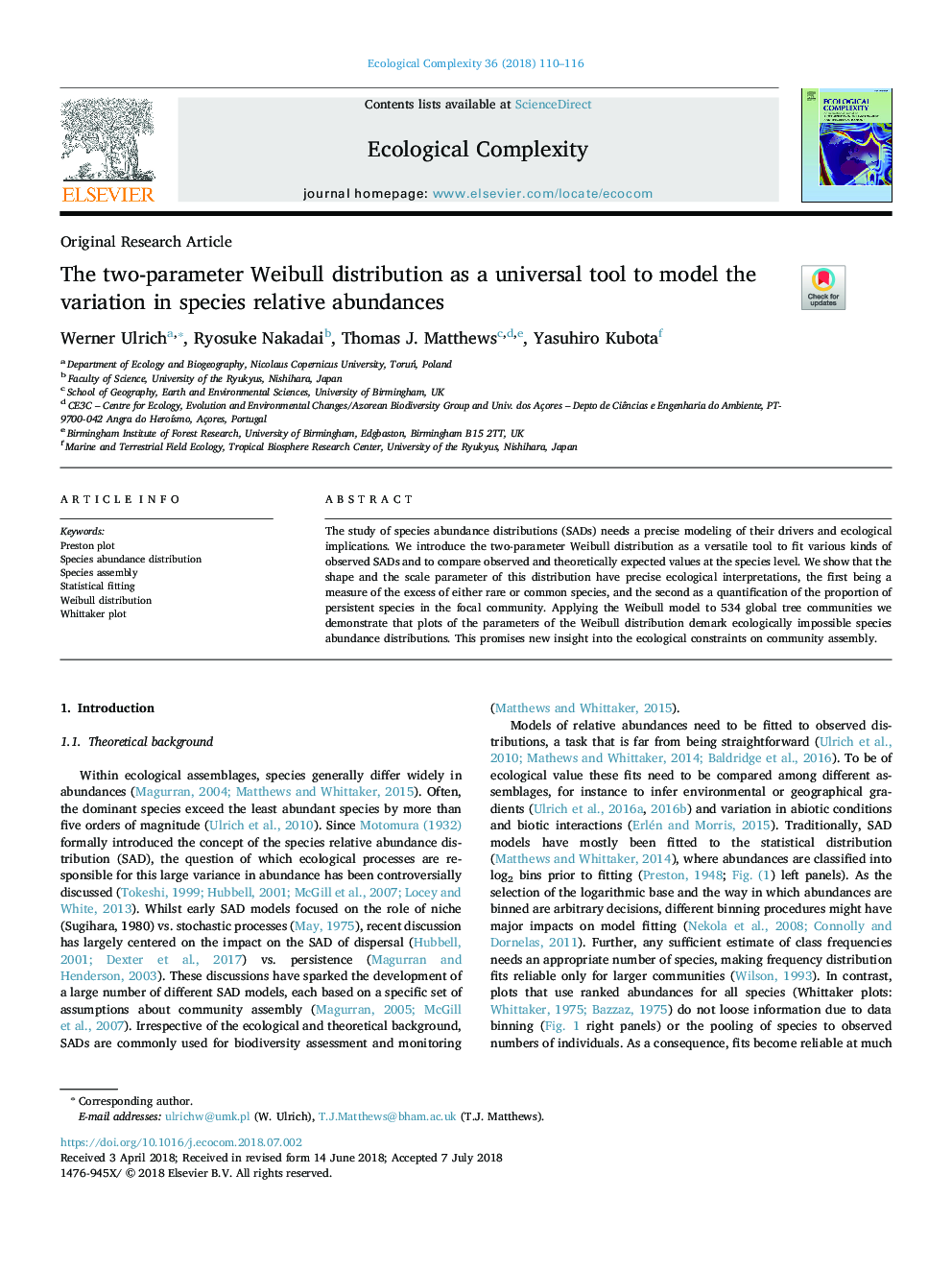| Article ID | Journal | Published Year | Pages | File Type |
|---|---|---|---|---|
| 8844804 | Ecological Complexity | 2018 | 7 Pages |
Abstract
The study of species abundance distributions (SADs) needs a precise modeling of their drivers and ecological implications. We introduce the two-parameter Weibull distribution as a versatile tool to fit various kinds of observed SADs and to compare observed and theoretically expected values at the species level. We show that the shape and the scale parameter of this distribution have precise ecological interpretations, the first being a measure of the excess of either rare or common species, and the second as a quantification of the proportion of persistent species in the focal community. Applying the Weibull model to 534 global tree communities we demonstrate that plots of the parameters of the Weibull distribution demark ecologically impossible species abundance distributions. This promises new insight into the ecological constraints on community assembly.
Related Topics
Life Sciences
Agricultural and Biological Sciences
Ecology, Evolution, Behavior and Systematics
Authors
Werner Ulrich, Ryosuke Nakadai, Thomas J. Matthews, Yasuhiro Kubota,
